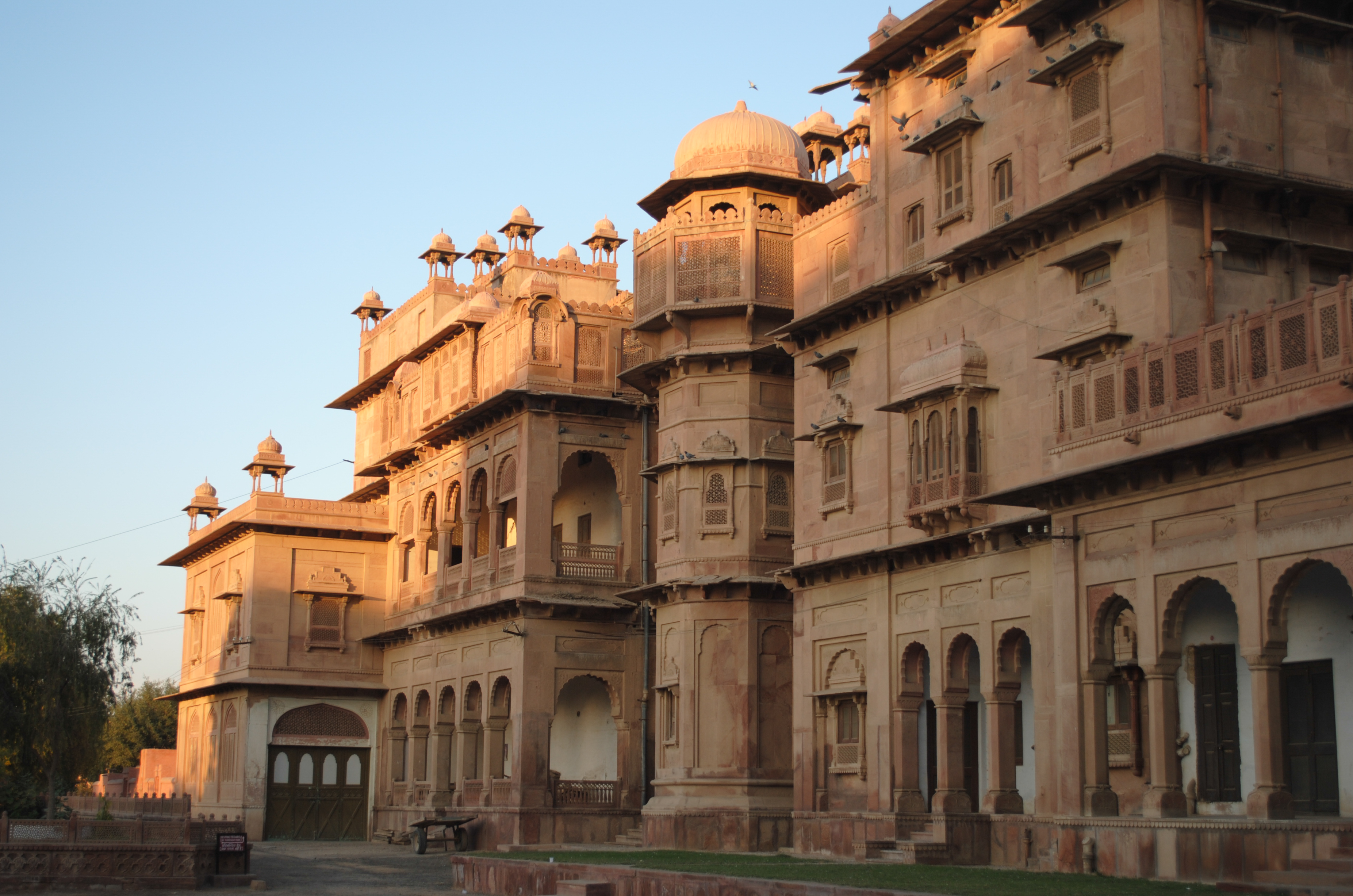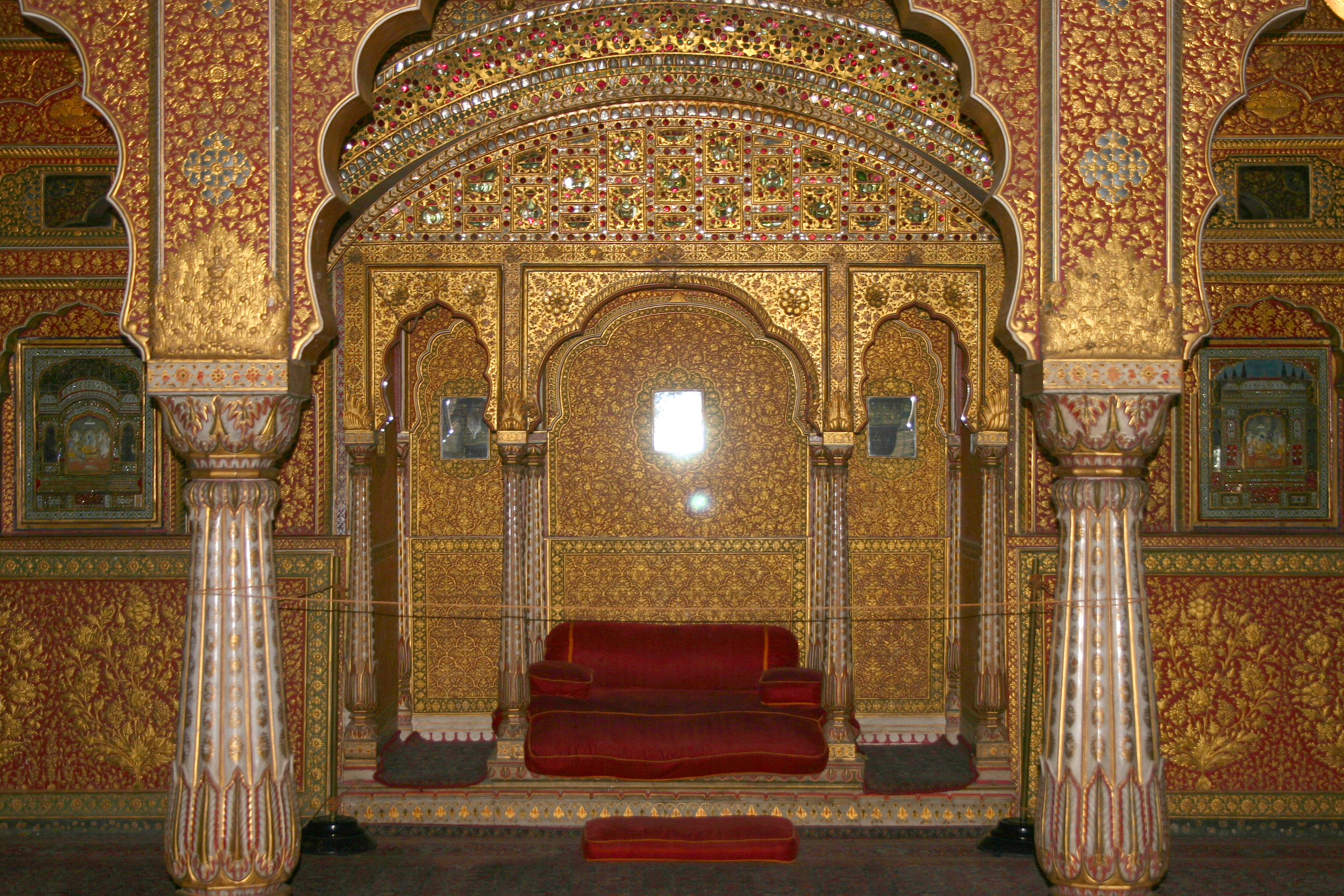Phool Mahal, nestled within the majestic Mehrangarh Fort in Jodhpur, represents a pinnacle of Rajputana architectural and cultural excellence. The palace emerges as a profound testament to the artistic vision and royal grandeur of the Rathore rulers during the 18th century. Its construction under Maharaja Abhaya Singh symbolizes not just architectural achievement, but a nuanced expression of cultural sophistication that transcends mere structural design.
The architectural narrative of Phool Mahal is deeply intertwined with the legendary Mehrangarh Fort, constructed by Rao Jodha in 1459. This fort's origins are steeped in mythical dimensions, particularly the tale of Cheeria Nathji, a revered hermit whose displacement became a pivotal moment in local folklore. The hermit's alleged curse on the land spoke to the complex spiritual negotiations underlying territorial expansions, revealing the intricate social dynamics of medieval Rajasthan.
Within the palace's ornate chambers, the blend of Mughal and Rajputana architectural styles creates a visual symphony of craftsmanship. Gold-leafed ceilings, intricate mirror work, and vibrant frescoes narrate stories of royal celebrations and cultural sophistication. These architectural elements were not merely decorative but served as powerful statements of political authority and aesthetic refinement, reflecting the Rathore rulers' commitment to artistic patronage.
The socio-political context of Phool Mahal extends beyond its physical structure, representing a microcosm of Jodhpur's complex historical landscape. The Rathore clan's political and cultural influence permeated every architectural detail, transforming the palace into a dynamic space of power representation. Lavish ceremonies and exclusive gatherings within these walls were strategic performances of social status and dynastic prestige.
Mehrangarh Fort's legendary curse provides a fascinating backdrop to Phool Mahal's existence. The narrative of Rajaram Meghwal's sacrificial burial beneath the fort's cornerstone symbolizes the profound human cost behind monumental architectural achievements. Such stories underscore the spiritual and emotional dimensions underlying seemingly pragmatic historical developments, revealing layers of cultural meaning often overlooked in conventional historical narratives.
The palace's design integrates multiple architectural influences, demonstrating the cosmopolitan nature of Rajput royal culture. Intricate carvings, ornate ceilings, and strategic use of local materials showcase a sophisticated understanding of architectural principles. The construction process reflected not just aesthetic preferences but also technological capabilities and cultural exchanges prevalent during the 18th century.
In contemporary times, Phool Mahal has transformed from a private royal chamber to a significant cultural heritage site. As part of the Mehrangarh Fort Museum, it offers visitors a immersive journey through Jodhpur's rich historical tapestry. The palace's preservation allows modern audiences to experience the nuanced artistic and cultural legacy of the Rathore rulers, bridging historical narratives with present-day cultural understanding.
The broader significance of Phool Mahal extends beyond its immediate architectural beauty, representing a profound cultural statement about Jodhpur's historical complexity. Its unique features—intricate carvings, mirror work, and gold filigree—serve as tangible expressions of a sophisticated cultural moment, inviting deeper reflection on the artistic and political dynamics that shaped Rajasthan's royal traditions.








